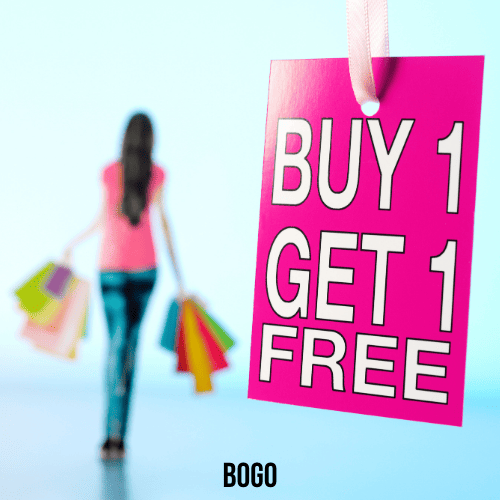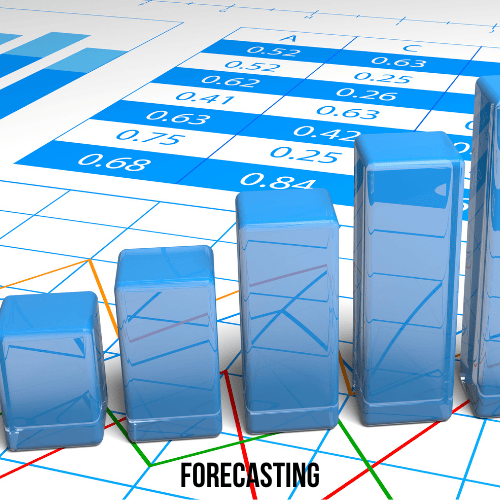
For emerging brands in the competitive CPG landscape, understanding and leveraging trade promotions can be the key to unlocking rapid growth and market success. As brands navigate the challenging waters of retail partnerships, shelf space battle and consumer attention, mastering the art of trade promotions can be a necessity.
Stuart Kennedy, co-founder of SKU partner Vividly, shared the most effective promotional strategies that can help you boost visibility, drive sales, and forge strong relationships with retailers while managing your resources efficiently.
Three of the myriad promotional strategies stand out for their widespread use and effectiveness: Scans, Slotting Fees, and Manufacturer Charge Backs (MCBs). Three Most Commonly Used Trade Promotions
Scans: Instant Sales Boosters
Scan-based promotions are a dynamic tool in the arsenal of trade promotions. Here, manufacturers offer discounts or rebates applied at the point of sale when products are scanned, benefiting the consumer but billed back to the manufacturer.
This approach encourages retailers to stock up on the promoted products and attracts consumers with instant savings. Scans are particularly effective for launching new products or revitalizing the sales of existing ones. By reducing the consumer’s purchase price, scans can significantly lift sales volume during the promotion period, making them a favorite among retailers looking to draw in price-sensitive shoppers.
Slotting Fees: Securing Prime Shelf Space
Slotting fees are upfront payments made by manufacturers to retailers to secure shelf space for new products. This trade promotion tactic is crucial for introducing new products into the market. The fee covers the retailer’s costs associated with adding a new SKU, such as inventory handling, shelf rearrangement, and the risk of investing in an unproven product.
While slotting fees might seem like a steep entry barrier, they offer manufacturers the chance to get their products in front of consumers in prime in-store locations. Effective negotiation of slotting fees can lead to favorable shelf placement, potentially driving higher sales volumes by ensuring products are highly visible to shoppers.
Manufacturer Charge Backs: The Rebate Strategy
Manufacturer Charge Backs (MCBs) are a rebate mechanism where manufacturers refund a portion of the product cost to the retailer after the sale. This trade promotion strategy is used to encourage retailers to reduce the retail price and pass the savings onto the consumer. MCBs are calculated based on the volume of products sold during the promotional period, incentivizing retailers to push more product.
This approach not only boosts sales but also strengthens the partnership between manufacturers and retailers by sharing the promotional cost burden. MCBs can be particularly effective in competitive markets, where maintaining an attractive price point is crucial for market share.
Why Trade Promotions Matter
Trade promotions like Scans, Slotting Fees, and MCBs are more than just tactics to increase sales. They are strategic tools that manufacturers and distributors use to manage and enhance their relationships with retailers. By understanding and effectively employing these promotions, brands can achieve multiple objectives:
- Drive Product Visibility: Securing the right shelf space and offering promotions that attract consumers help increase product visibility and brand awareness.
- Boost Sales Volume: Promotional strategies that directly benefit the consumer, such as scans and MCBs, can significantly lift sales volumes during the promotional period.
- Strengthen Retailer Relationships: Sharing the promotional efforts and costs with retailers helps build stronger, more collaborative relationships.
Other Types of Trade Promotions
In addition to Scans, Slotting Fees, and Manufacturer Charge Backs (MCBs), the landscape of trade promotions is rich with a variety of strategies designed to meet diverse marketing objectives and market needs.

Each type of trade promotion offers unique benefits and can be tailored to support different stages of a product’s life cycle, from launch to maturity. Let’s delve into some of the other popular types of trade promotions and how they contribute to a comprehensive trade marketing strategy.
BOGOS
BOGO promotions are a powerful tool for driving immediate sales and clearing inventory. By offering an additional product free of charge upon the purchase of the first, consumers are incentivized to buy more, often leading to a significant boost in sales volume. This strategy is especially effective for introducing new products to the market or encouraging trial among consumers
Volume Discounts
Volume discounts are provided to retailers based on the quantity of products they purchase. This encourages bulk buying and ensures that retailers are motivated to stock up and push more products through to the end consumer. Volume discounts can help manufacturers gain preferred supplier status with retailers, leading to more prominent shelf placement and better in-store visibility.
Co-operative Advertising
In co-operative (co-op) advertising, manufacturers share the cost of advertising with retailers. This trade promotion strategy helps increase the product’s visibility both in-store and through various media channels, such as print, digital, and broadcast. Co-op advertising is a win-win for both parties; manufacturers get their products advertised at a lower cost, and retailers enhance their store’s promotional appeal without bearing the full advertising expense.
Display Allowances
Manufacturers offer display allowances to retailers as an incentive to set up promotional displays in high-traffic areas of the store. These displays enhance product visibility and can significantly influence purchasing decisions by drawing attention to the product. Display allowances cover the cost of setting up and maintaining the display, making it an attractive proposition for retailers.
Free merchandise
Offering free merchandise to retailers as part of a trade promotion can be an effective way to encourage the stocking and sale of new or existing products. This might include providing extra units of the product at no cost, which retailers can then use as part of their own in-store promotions or as incentives for consumers.

Training Programs
Manufacturers may offer training programs to retail staff to educate them about the features and benefits of their products. Well-informed sales staff are more likely to recommend these products to consumers, leading to increased sales. This type of trade promotion is particularly useful for complex products that require a detailed understanding to sell effectively.
The Strategic Application of Trade promotions
The strategic selection and application of trade promotions can have a profound impact on a product’s market performance. Brands must consider their marketing objectives, the product life cycle stage, and the preferences of their retail partners when choosing which promotions to implement. A well-rounded trade promotion strategy will often incorporate a mix of the tactics described above, tailored to the specific dynamics of the market and the needs of their target retailers.
Successfully navigating the complex landscape of trade promotions requires a deep understanding of each tactic’s nuances and strategic implementation. Brands must carefully plan and execute their promotional strategies, ensuring they align with overall marketing objectives and retailer expectations. Moreover, measuring the effectiveness of these promotions through sales lift, ROI, and market share is crucial for refining future strategies and maximizing the return on investment.
Trade Promotion Management (TPM) software represents a technological leap forward, offering brands and distributors a suite of tools to plan, execute, monitor, and analyze trade promotional activities with unprecedented precision and efficiency. Here’s a closer look at the pivotal benefits of incorporating TPM software into your trade promotion strategy:
Enhanced Planning and Forecasting

TPM software enables brands to meticulously plan their trade promotions with a data-driven approach. Advanced forecasting tools within TPM solutions use historical data and market trends to predict the outcomes of future promotions, helping brands to make informed decisions about which types of promotions to run, when to run them, and how to allocate their budgets most effectively. This level of precision in planning and forecasting helps to maximize the ROI of trade promotion activities.
Streamlined Execution and Management
The logistical challenges of coordinating trade promotions across multiple retail partners and channels can be daunting. TPM software streamlines this process, providing a centralized platform for managing all aspects of trade promotions. From scheduling and execution to monitoring compliance and performance in real-time, TPM solutions ensure that promotions are executed as planned, reducing the risk of errors and inefficiencies that can dilute their effectiveness.
Data-driven Insights and Optimization
The rich data generated by trade promotions are a goldmine of insights—provided you have the tools to analyze it. TPM software includes advanced analytics capabilities that turn raw data into actionable intelligence. Brands can assess the performance of individual promotions, understand consumer and retailer behavior, and identify patterns and trends that can inform future promotional strategies. Over time, this continuous cycle of analysis and optimization leads to increasingly effective trade promotions.
Enhanced Collaboration and Communication
Successful trade promotions require close collaboration between manufacturers, distributors, and retailers. TPM software fosters improved communication and collaboration by providing a shared platform where all stakeholders can access up-to-date information about promotional activities, share feedback, and make joint decisions. This collaborative approach not only enhances the effectiveness of promotions but also strengthens the relationships between all parties involved.
Scalability and Flexibility
As brands grow and expand into new markets, their promotional strategies must evolve to meet new challenges. TPM software is designed to scale with your business, offering the flexibility to adapt to changing market conditions, consumer preferences, and business objectives. Whether you’re expanding your product line, entering new geographic markets, or adapting to shifts in consumer behavior, TPM solutions can accommodate your evolving needs.
The adoption of Trade Promotion Management software offers a comprehensive solution to the challenges of planning, executing, and evaluating trade promotions. By leveraging the power of technology, brands can achieve greater efficiency, effectiveness, and strategic insight into their promotional activities, leading to improved sales performance and stronger retailer relationships.

About Vividly
Vividly is a trade promotion management software built by and for the consumer-packaged-goods industry (CPG). From campaign creation to deductions management and promotion measurement, we help brands like Perfect Snacks, Liquid Death, Quinn, and Hint Water manage every element of trade spend. We are designed to fit the quintessential business model of small to midsize CPG companies. With our easy-to-use platform and industry-leading experience, we pride ourselves on our ability to bring businesses to the next level. Visit govividly.com to learn more.

